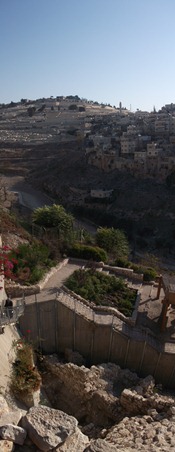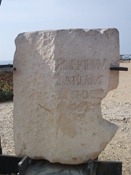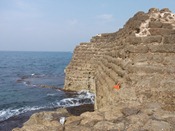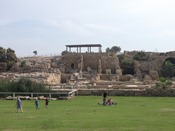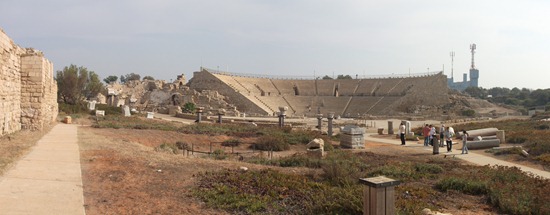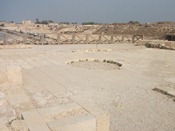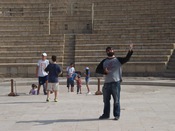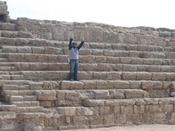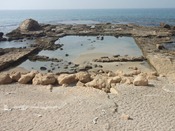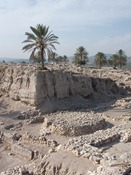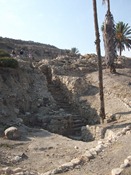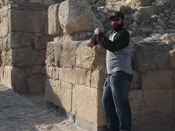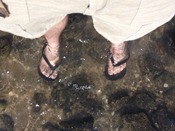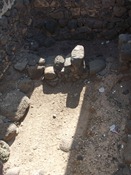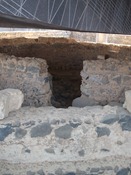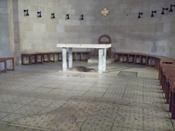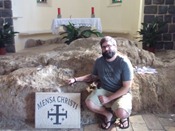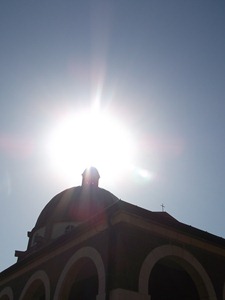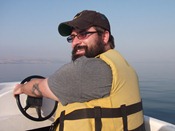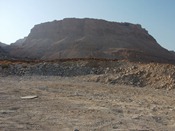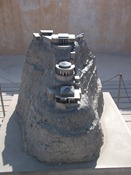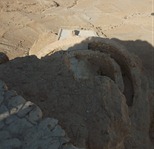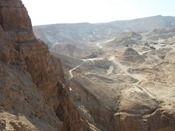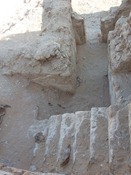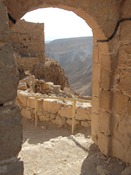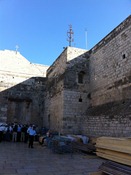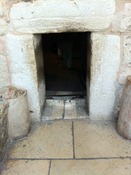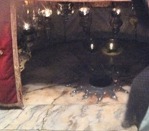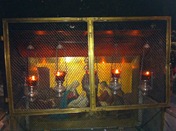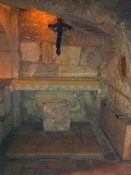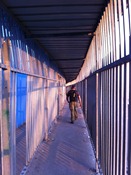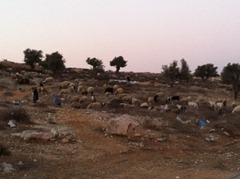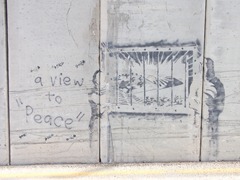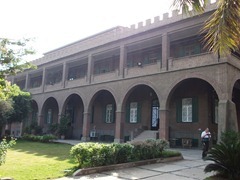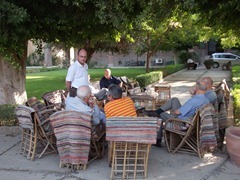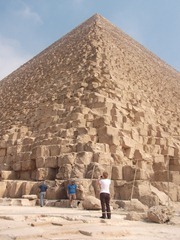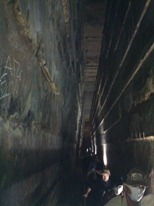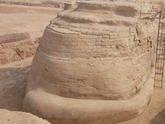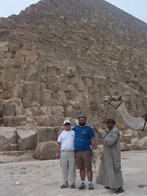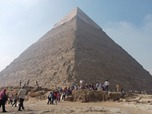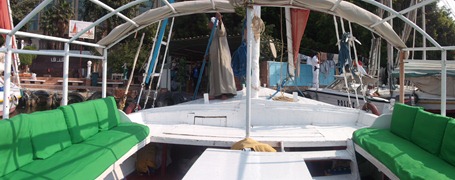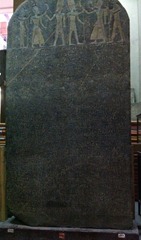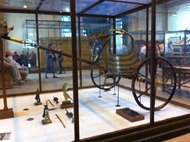The Beard Goes Home is an ongoing chronicle of my trip to Israel, Cairo and Rome from November 3-18. If you want more information on a picture, hover your mouse over it for a pop-up caption. If you want to see a bigger version of the picture, click on it.
On our last day in Jerusalem, Father Kevin took Thomas and I to experience one of the coolest (in nerd-speak) sites in the city – the City of David. Bethlehem is sometimes called ‘the City of David’ because David was born there, but the name was also given to Jerusalem.
According to 2 Samuel, David’s first act upon becoming king of Israel was to take the city of the Jebusites, Jerusalem (in around 1000 BCE). The Jebusites seem to have been a small clan that lived in the southern part of Israel, in the midst of the lands given to the tribe of Benjamin. They built a pretty substantial (for its day) walled city on the top of Mt. Zion, and David managed to take it. Probably because it was a great location, David made Jerusalem his capitol city (2 Samuel 5:6-10).
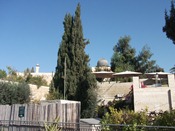 After David’s death, his son Solomon became king, and built a Temple to God on another hill overlooking Mt. Zion. Solomon’s Temple was one of the greatest temples in the ancient world, and even after Israel divided into two kingdoms (thanks to Solomon’s son, Rehoboam), the Temple ensured that Jerusalem remained the capitol of the kings of Judah (which is what the Southern kingdom was called) until Jerusalem was destroyed by Babylonians in 586 BCE.
After David’s death, his son Solomon became king, and built a Temple to God on another hill overlooking Mt. Zion. Solomon’s Temple was one of the greatest temples in the ancient world, and even after Israel divided into two kingdoms (thanks to Solomon’s son, Rehoboam), the Temple ensured that Jerusalem remained the capitol of the kings of Judah (which is what the Southern kingdom was called) until Jerusalem was destroyed by Babylonians in 586 BCE.
As Judah’s power and presence in the world waxed and waned, later kings did what they could to continue to expand and reinforce the City of David. The city gradually grew towards the Temple so that the original city complex was at the south end of the growing town.
Today, the City of David is being excavated, and it stands outside the city walls built by Herod the Great. As we walked down the stairways, we could see the layers of history. Walls built into the hillside by the Jebusites peeked out from under and behind fortifications added by later kings and even some of the ruins of Nehemiah’s rebuilt walls.
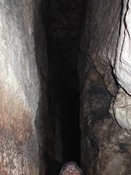 Without question the most spectacular experience of our visit to the City of David was our trip through Hezekiah’s Tunnel. King Hezekiah carried out one of the largest and most important innovations to the town during the 7th century BCE (2 Kings 20:20). Jerusalem’s water came from a spring at the base of the city. The problem (much like at both Masada and Mt. Megiddo) was that in order to get the water, a person had to leave the city walls. Which is not a problem unless your city is besieged by a foreign army.
Without question the most spectacular experience of our visit to the City of David was our trip through Hezekiah’s Tunnel. King Hezekiah carried out one of the largest and most important innovations to the town during the 7th century BCE (2 Kings 20:20). Jerusalem’s water came from a spring at the base of the city. The problem (much like at both Masada and Mt. Megiddo) was that in order to get the water, a person had to leave the city walls. Which is not a problem unless your city is besieged by a foreign army.
In Hezekiah’s time, the Northern Kingdom, Israel, had already been conquered by the Assyrian Empire (in 722 BCE) and Judah existed in an uneasy tension. Hezekiah had a tunnel carved beneath the city that diverted the spring inside the city to a pool that was called ‘Siloam’.
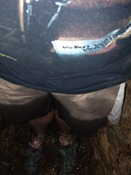 Armed with flashlights, we entered the tunnel where the spring emerged from the rock, wading quickly into water that flowed up around our waists. For most of the trip, the water ran around our ankles as we walked through passages that were usually high enough for us to stand. A few times we nearly had to crawl, and it was rarely wide enough that I did not hit my shoulders on the walls. With no lights except for our small flashlights, we plodded through the tunnel’s 530 meters (1,740 ft., or about 1/3 mile) in just under 45 minutes.
Armed with flashlights, we entered the tunnel where the spring emerged from the rock, wading quickly into water that flowed up around our waists. For most of the trip, the water ran around our ankles as we walked through passages that were usually high enough for us to stand. A few times we nearly had to crawl, and it was rarely wide enough that I did not hit my shoulders on the walls. With no lights except for our small flashlights, we plodded through the tunnel’s 530 meters (1,740 ft., or about 1/3 mile) in just under 45 minutes.
We finally emerged at the site of the current Pool of Siloam – because of changes to the City’s geography, the water has gathered in a few different spots. This pool is famous because Jesus healed a blind man by making mud (with dirt and spit), smearing it on his eyes and then sending him to wash in this pool (John 9).
Without question, this was one of the highlights of our trip. We were literally walking through biblical history spanning 3,000 years. Moreover, the tunnel was dug from both sides, just like the Chunnel, but without the advantages of modern technology. It’s amazing what we can accomplish, and how much of it is now little more than a tourist attraction.

